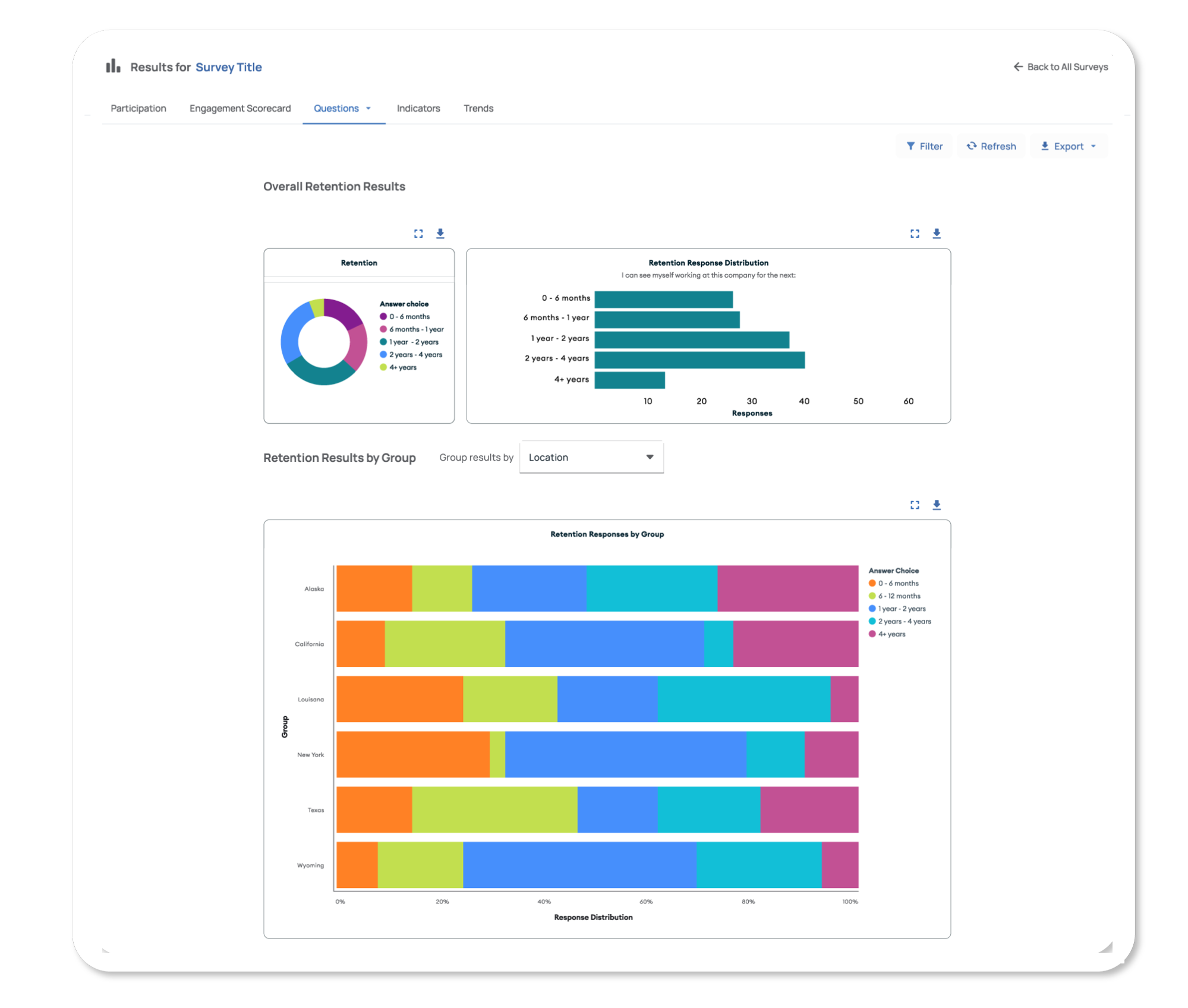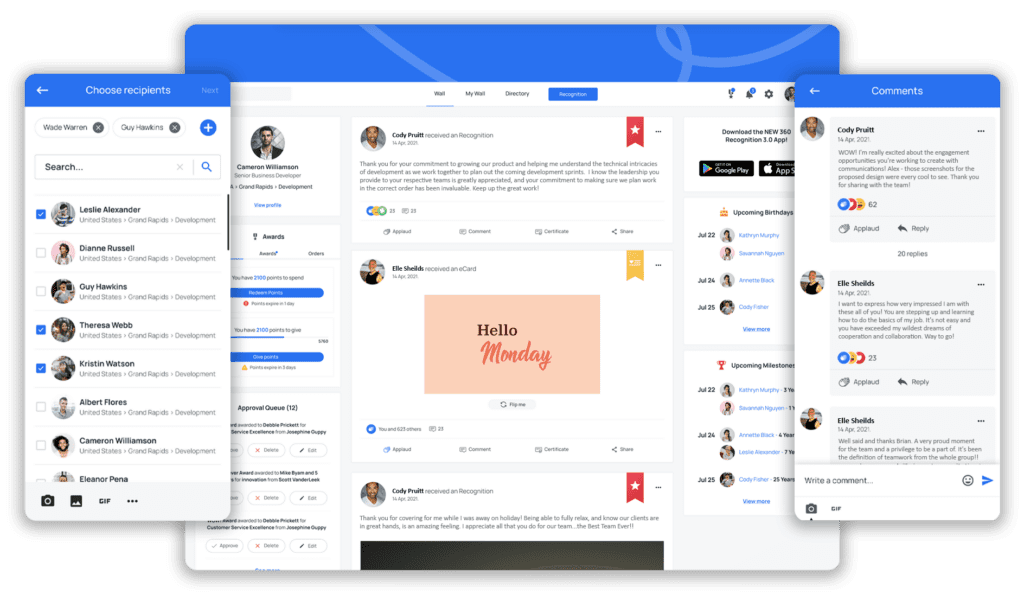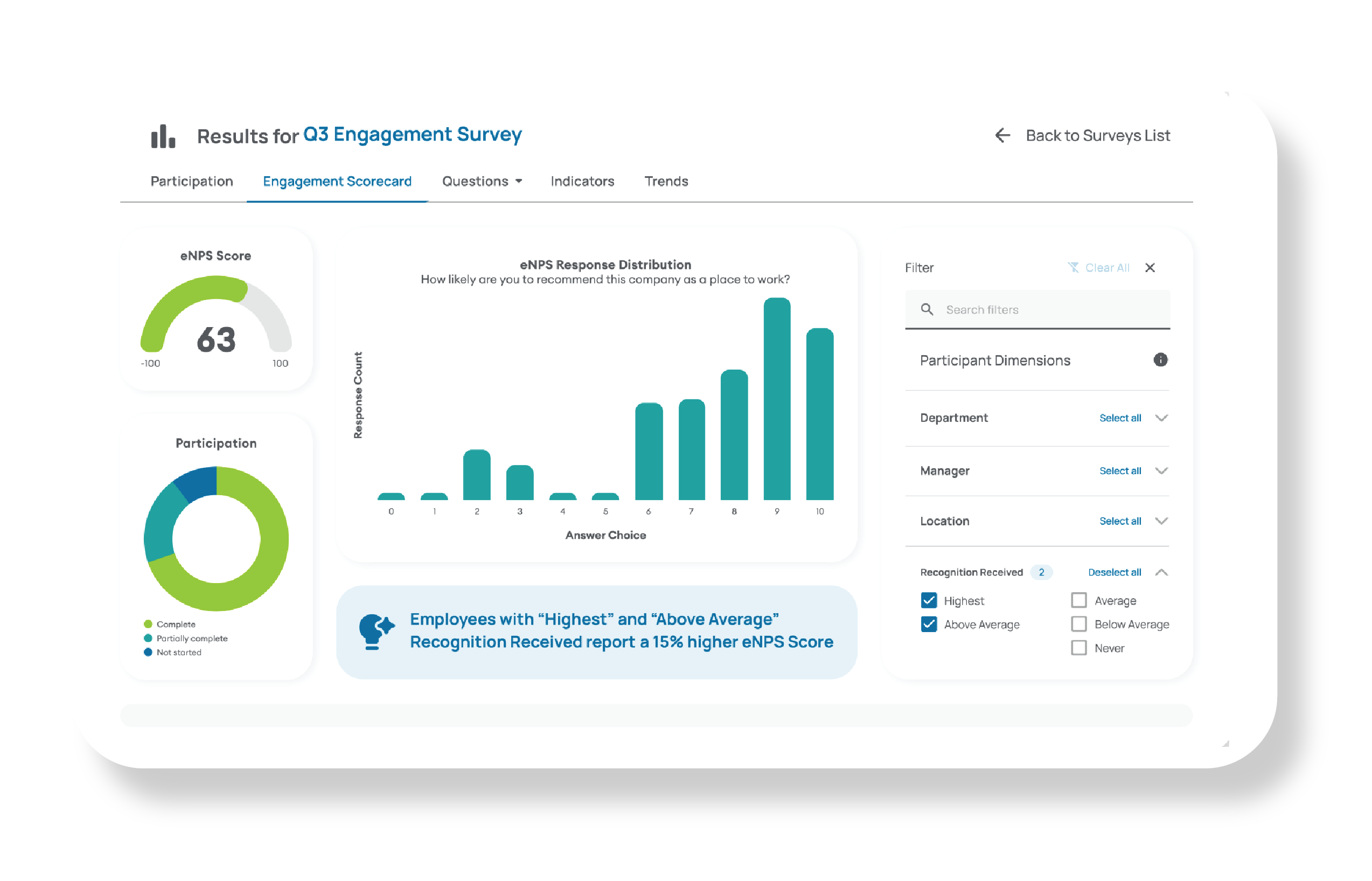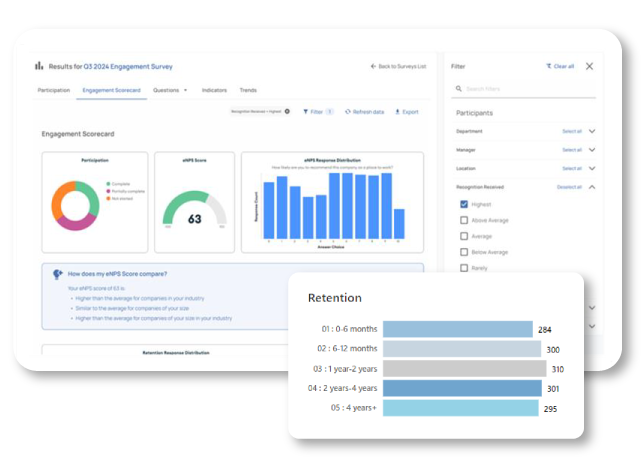April 18, 2025

Employee feedback tools take the question work out of your human resource teams and work culture development. These tools also provide comprehensive assessments of an employee’s performance through various feedback mechanisms.
Instead of following industry trends or going with your gut, you can engage your employees and hear directly from them what they want, need, fear, and enjoy about your company. Additionally, managing and utilizing employee data effectively can enhance workplace culture and streamline HR processes.
However, there are dozens of employee feedback tools to choose from, and making a final decision can feel overwhelming. We’re here to help remove some of the chaos from your decision-making process and set your team up for success by evaluating the best employee feedback software available.
Below, we’ll walk you through everything you need to know about employee feedback tools, including what they are, why you need them, how to choose the best one, and your top options in 2025.
Introduction to Employee Feedback
Employee feedback is a crucial aspect of any organization, as it provides valuable insights into the thoughts, feelings, and experiences of employees. Collecting employee feedback helps organizations understand their strengths and weaknesses, identify areas for improvement, and make data-driven decisions to boost employee engagement, productivity, and overall performance.
Here, we will explore the importance of collecting employee feedback and how it can be used to drive continuous improvement and growth.
Importance of Collecting Employee Feedback
Collecting employee feedback is essential for several reasons. Firstly, it helps organizations understand their employees’ needs, concerns, and expectations, which can inform decisions on company culture, policies, and procedures.
Secondly, employee feedback provides valuable insights into employee engagement, sentiment, and performance, which can be used to identify areas for improvement and develop targeted strategies to address them.
Finally, collecting employee feedback demonstrates that an organization values and respects its employees’ opinions, which can lead to increased employee satisfaction, motivation, and retention. By using employee feedback tools, such as employee feedback software, organizations can collect and analyze feedback in a systematic and efficient way, making it easier to identify trends and areas for improvement.
What Is an Employee Feedback Tool?
An employee feedback tool is a software program designed to help gather employee feedback and streamline the process of giving and receiving feedback within a company.
These tools go beyond traditional annual performance reviews, gathering employee feedback and enabling a culture of continuous feedback.
Here's a breakdown of what employee feedback tools offer:
- Structured Feedback Mechanisms: These tools provide standardized formats for employees to provide feedback to managers, peers, or even anonymously. This can include surveys, questionnaires, or open-ended prompts.
- Two-way Communication: The platform facilitates a back-and-forth dialogue around feedback. Managers can gather feedback, respond to employee concerns, clarify expectations, and offer coaching based on the input received through the feedback process. This process is crucial for improving employee performance through goal tracking and performance reviews.
- Data Analytics and Reporting: Many tools compile and analyze employee feedback, providing insights into employee sentiment, strengths, and weaknesses across teams, and tracking employee progress over time. Analyzing employee feedback can be instrumental in informing HR initiatives and driving positive change. Additionally, these feedback tools can enhance workplace culture by acting on employee insights.

Here are some of the key benefits of using employee feedback tools:
- Improved Employee Engagement: A critical driver of employee engagement is feeling heard and valued by their employer. Regular feedback loops foster a sense of ownership and purpose. Gathering feedback throughout various stages of an employee’s journey boosts employee engagement and enhances the overall employee experience.
- Enhanced Performance Management: By providing ongoing feedback and coaching, managers can help employees continuously improve their skills and performance. Instant feedback during live meetings and presentations can significantly enhance engagement and allow for real-time adjustments.
- Identification of Areas for Improvement: Feedback tools can surface areas where the company culture, processes, or communication strategies might need improvement.
- Boosted Employee Retention: Employees who feel their voices are heard and valued are more likely to stay with the company.
- Gauge Employee Satisfaction: Feedback tools can gauge employee satisfaction through ongoing feedback collection and engagement surveys, providing actionable insights into performance management.
While gathering information from your employees, you might discover that employees want a peer-to-peer recognition platform or a more comprehensive anonymous employee feedback and recognition program—and you can turn to other employee feedback solutions to solve these needs.

Why Use an Employee Feedback Tool?
The workplace is changing faster than ever thanks to ever-evolving trends and technology, and your business can’t afford to wait for (or rely on) industry studies and data.
You need actionable insights to know how to boost employee satisfaction and engagement, and you need them as fast as possible. Real-time employee feedback is a crucial feature for enhancing communication and engagement within teams.
Employee listening tools help you gather and measure employee feedback, and collect real-time insights from your staff. Employee feedback surveys are essential for integrating with existing systems to streamline the survey process and improve response rates.
You can poll employees as often as you want and create a work culture of transparency and accountability with open communication. Employee engagement tools are essential for improving workplace engagement by providing a broad range of functionalities designed to enhance overall employee involvement and satisfaction.
Here are a few examples of things you could learn with the anonymous employee feedback tools:
- Discover if managers are under (or over) performing
- Learn how the morale at the business is doing
- Find out which benefits your employees want
- Gauge overall levels of job satisfaction
- See if diversity, equity, and inclusion (DEI) training is working
- Uncover if there are any issues, discrimination, or unconscious bias
- Learn if employees are engaged with their work
- Feedback from direct reports can provide a comprehensive view of employee performance
Discovering this information proactively is better than waiting to hear it during an employee’s exit interview.
However, remember that your employees’ wants and needs aren’t set in stone. What’s important to them in January might not be important in September, and your business needs real-time insights to make the best decisions.
RELATED: Stay Interviews: What are They, Why They’re Important, and 40 Example Questions

How to Choose the Right Employee Feedback Tool
With so many options on the market, finding the best employee feedback tool for your company can feel like looking for a needle in a haystack.
Many have look-a-like features and functionality, while some charge enterprise prices for a slightly upgraded experience.
How do you know which is the right employee feedback tool for your business, and what should you know before you make a big investment?
Below, we'll walk you through the core criteria you should use to evaluate employee feedback tools. None of these characteristics are necessarily more important than another—just keep them all in mind as you assess solutions for your business.
Price
It doesn’t matter how fancy or easy to use it is if you can’t afford it. Decide on your budget, and then start looking for tools that’ll make your accountants happy.
Later, you can decide whether you want to pay a bit extra for a handful of features or if you’d like a cheaper, more simplistic employee feedback tool. Many platforms also offer a free trial, allowing you to experience the software’s features without any initial cost.
Investing in top employee feedback tools can provide real-time insights, enhance company culture, and improve employee morale and productivity.

Functionality
Make a list of the features and functionality you want in your tool. It’s easy to get lost doing head-to-head comparisons to see which tools have the most features, but you don’t need the most features—you likely just need a core set of key features that align with your team’s needs and business goals.
Additionally, ensure the tool allows you to track progress to measure goal alignment and effectiveness in achieving objectives.
Ease of Use
Your employee feedback tool should be easy to set up and navigate without an engineering degree. It needs to have a simplified user interface (UI) that your human resources team can understand, and it needs to produce simple surveys (or tools) your employees can access without watching a 5-minute how-to video, facilitating meaningful conversations that enhance employee engagement and continuous improvement.
Branding
Some employee feedback tools offer a white-label experience, letting you customize the platform with your colors and branding. This isn't a must-have for any company, but if the user experience is important to your business, you might want to invest in a tool that provides this functionality.

Templates
Find a solution that allows you to create custom surveys with pre-built templates for surveys, meaningful feedback, and employee recognition. Building these on your own might sound simple, but it’s nice to have a starting point when launching a brand-new employee listening tool.
Flexibility
Look for solutions with the integrations you need to work with your current tools and processes. You don’t want to have to shift your workflows to accommodate software—you want the software to shift to accommodate you.
Additionally, prioritize tools that facilitate peer feedback, enabling employees to share insights and contribute to a culture of continuous communication and improvement.
Security
Employees will likely be sharing sensitive information, and sometimes it might be personally identifiable. Use a solution with top-notch security protocols and user permissions to prevent sensitive data from getting leaked, ensuring that timely feedback can be provided securely and efficiently.
Support
Inevitably, you'll need help from time to time. Partner with an employee feedback solution with world-class, responsive support teams. These individuals should be friendly, patient, and proactive in helping you build out your program and troubleshoot problems.
Insights
You don’t just want piles of raw data—you want valuable insights that uncover essential information regarding employee engagement and retention. Look for solutions that’ll help you digest the feedback with charts and customizable visualizations.
Actionable data derived from this feedback can inform improvements in workplace culture and processes.

Feedback Collection and Analysis
Feedback collection and analysis are critical components of any employee feedback process. In this section, we will explore the different methods of collecting employee feedback, including surveys, focus groups, and one-on-one meetings, as well as the importance of analyzing and acting on feedback.
Feedback Process
The feedback process typically involves several stages, including feedback collection, analysis, and action planning. Feedback collection involves gathering feedback from employees through various methods, such as surveys, focus groups, or one-on-one meetings.
Analysis involves examining the feedback data to identify trends, patterns, and areas for improvement. Action planning involves developing strategies and initiatives to address the issues and concerns raised by employees.
By using employee feedback tools, such as feedback software, organizations can streamline the feedback process, making it easier to collect, analyze, and act on feedback. For example, organizations can use pulse surveys to collect regular feedback from employees, or use 360-degree feedback to gather feedback from multiple sources.
7 Types of Employee Feedback Tools
While there are countless feedback tool providers on the market today, let's first discuss which types of survey tools are out there.
1. Employee Engagement Surveys
Use quick, real-time pulse surveys to collect honest employee feedback data quickly. You can send these employee surveys out on a regular cadence (weekly, monthly, quarterly) or use them one-off to problem-solve or identify growing issues before they become full-scale challenges. Employee journey mapping can help track and analyze feedback throughout various stages of the employee lifecycle.
While one-time surveys can reveal powerful insights, gathering feedback regularly is an essential starting point for improving employee engagement and performance management. Regular surveys help gather insights that are crucial for understanding employee sentiment and addressing workplace issues in real-time.
It’s even better when you compare surveys over time to discover trends. Is your workforce becoming more or less engaged? Are they comfortable working at your company? How does the new acquisition affect overall employee happiness, morale, and engagement?
Find an employee engagement survey platform that comes with all the pre-built tools you need. These should include templates, customizable surveys, sending capabilities, analytics, and automation.
2. Performance 360 Feedback Tools
360 feedback tools allow your employees to give real-time feedback and provide honest feedback for managers, leaders, and coworkers. This feedback could be requested (by an individual or management), and it can also be anonymous. Comprehensive performance reviews facilitated by these tools can significantly enhance employee engagement and productivity.
Providing 360 feedback lets your employees learn about their strengths and weaknesses from the ones who know them the best. You could use open-ended survey questions or scoring to learn more about an employee's performance. These tools play a crucial role in continuous performance improvement by offering ongoing feedback and goal tracking.
Management can use the feedback from these tools in one-on-one meetings, interviews, and promotion discussions. Bring up employees’ feedback, and ask them what they think about it. Do they agree or disagree?

3. Social Feedback and Communication Platform
360 feedback tools let your employees provide feedback in a private (or anonymous) way, but a social feedback (or peer recognition) tool makes this process public. Consider it a social platform for celebrating individual and team wins.
Public recognition and feedback help boost employee morale. Individuals like to feel seen for their hard work, and it means the world to them when someone else notices (and speaks up).
Provide a safe place for this kind of open communication with a social feedback and communication platform—it’s a private space for your employees to chat and comment at work, helping to improve employee engagement.
Unlike social media platforms, this information stays private, and other people can’t join the conversations.
4. Recognition Program
Launch a formal employee recognition program, like Terryberry's Be Recognized, at your company to proactively celebrate their wins, anniversaries, and milestones. Recognition isn't exactly an employee listening tool, but it's a way for you to communicate that you recognize and care about your employees.
Consider awarding employees with swag, custom merchandise, trophies, or gift cards to spend as they like. These might seem like small gestures, but every thought counts—especially when employees feel you're going above and beyond your obligation to recognize their work.
5. Employee Listening Analytics and Reporting
All the employee feedback and listening tools in the world won’t do you any good if you don’t have the functionality and know-how to digest the data you collect.
Find an employee feedback tool with advanced analytics and reporting. It should allow you to build custom and automated reports to learn about unique insights and changes over time. These tools enable you to make data-driven decisions that enhance workplace culture and engagement.
Each survey and tool you use measures employees’ responses at a single moment in time, but your workers aren’t this simple or static. Their thoughts, opinions, and behaviors change from minute to minute and day to day.
Regularly surveying your employees and comparing feedback with analytics tools helps you identify trends and insights behind the raw numbers, improving employee satisfaction and retention.
6. Anonymous Feedback Box
Sometimes, you don’t need a thought-out survey—you just need a way to collect employee feedback and let employees anonymously provide feedback and ask questions. Some employees might want to vent, and others may want to ask sensitive questions that they don’t want to be tied to their names. These tools also allow employees to request feedback quickly and efficiently.
Some leaders worry that anonymous employee feedback software opens up the floodgates to trolling and negative comments, but that’s not always the case.
Employees could be embarrassed about a question they have—whether that’s because it exposes too much personal information (like regarding mental health or a disability) or makes them seem unintelligent or weak.
There are no bad questions, especially when it comes to employee engagement and work culture. Using these tools to address concerns within an organization is crucial for improving retention and workplace culture.

7. Two-Way Conversations
Expanding upon anonymous employee feedback, you want a tool that lets you engage your employees with follow-up answers (whether that’s anonymous or not). Listen to their thoughts and concerns, and have a one-on-one conversation about it.
Maintaining a feedback loop is crucial for organizational success, as it helps align employees with company goals and objectives, enabling real-time adjustments and empowering employees.
Some concerns are better addressed with a larger audience in a team meeting or all-hands, but others you’ll want to take offline and handle in private.
Employee feedback tools with two-way (or more) conversation functionality allow you to keep your discussions in one centralized location for easy reference and follow-up—and it also keeps it private from other third-party applications.
These platforms not only collect feedback from various sources but also analyze it to derive insights that inform actionable feedback, aimed at improving employee engagement and performance.
Performance Management and Feedback
By using performance feedback tools, such as performance management software, organizations can provide employees with regular, timely, and constructive feedback that is aligned with their goals and objectives. This can help employees understand their strengths and weaknesses, identify areas for improvement, and develop strategies to address performance gaps.
Additionally, performance feedback tools can help organizations track employee progress, provide ongoing feedback and coaching, and support employee development and growth. For instance, organizations can use continuous feedback tools to provide employees with regular feedback and coaching, or use comprehensive performance reviews to evaluate employee performance and provide targeted feedback.
By leveraging employee feedback solutions, organizations can create a culture of continuous improvement, where employees are empowered to provide and receive feedback, and where feedback is used to drive growth, development, and success.
Best Employee Feedback Tools on the Market

Of course, choosing the best employee feedback tool depends on your specific needs and company culture. But we've put together a breakdown of some of the top options categorized by their strengths.
Just Right:
Terryberry's Be Heard Platform:
Terryberry’s employee survey tool, Be Heard, focuses on capturing real-time feedback and insights from your employees. Use our intuitive drag-and-drop survey builder to create questionnaires that align with your business’s brand and design.
It makes it easy to create and distribute surveys, and the dashboards provide easy-to-digest insights. An intuitive user experience in the context of survey creation is crucial to maintaining high participation rates among employees.
You have plenty of options for your surveys:
- Engagement Surveys: Offer a scientifically grounded baseline to measure employee engagement levels.
- Pulse Surveys: Enable real-time, actionable, anonymous surveys focused on topical areas, supporting data-driven decision-making to address immediate concerns or trends.
- Experience Surveys: Focus on measuring key moments throughout an employee’s journey with the company, from onboarding to exit, to ensure every stage is acknowledged and optimized for a better workplace experience.
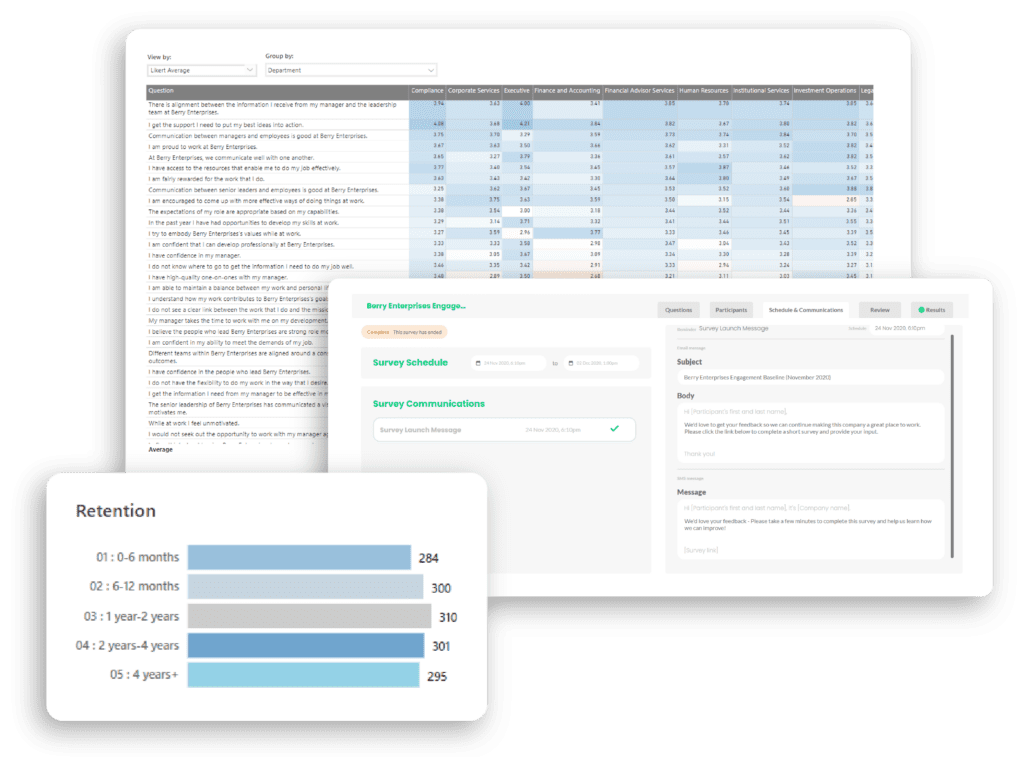
Beyond Be Heard’s surveying functionality, Terryberry offers a complete, end-to-end employee engagement platform. Whether you want to engage teams with employee recognition, rewards, wellness, or communication, we offer all the products and features you need in one comprehensive package.
The platform also assists in gathering and analyzing employee performance feedback to improve team dynamics, engagement, and overall productivity.
Terryberry’s survey tool is ideal for medium to large enterprises looking to deepen their understanding of engagement within a comprehensive employee recognition program. Its robust analytics and customizable survey capabilities make it perfect for organizations with complex hierarchies or diverse teams that require nuanced insights.
Just the Basics:
SurveyMonkey:
SurveyMonkey is an online survey tool that offers design, distribution, and analysis features. It provides a user-friendly interface and support for a broad range of survey types (from engagement and satisfaction to training feedback and event planning). It provides quick insights through easy-to-use analytics and customizable survey templates.
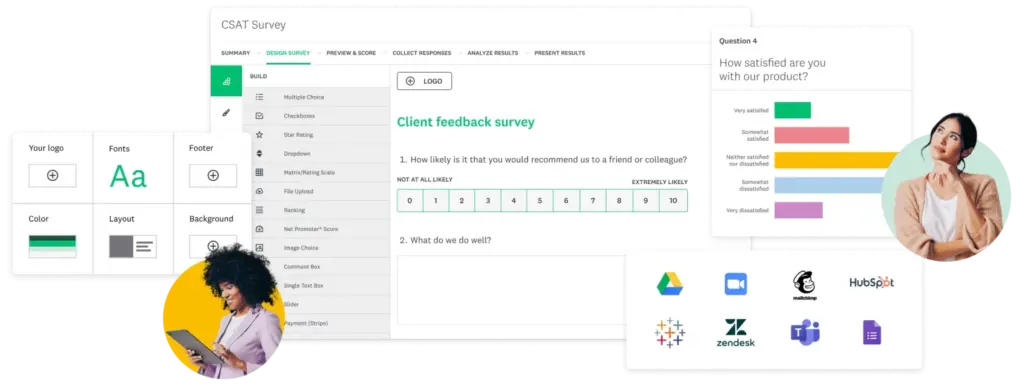
Google Forms:
Google Forms is a free and easy-to-use option that's ideal for basic surveys and internal data collection within an organization that already uses Google Workspace products.
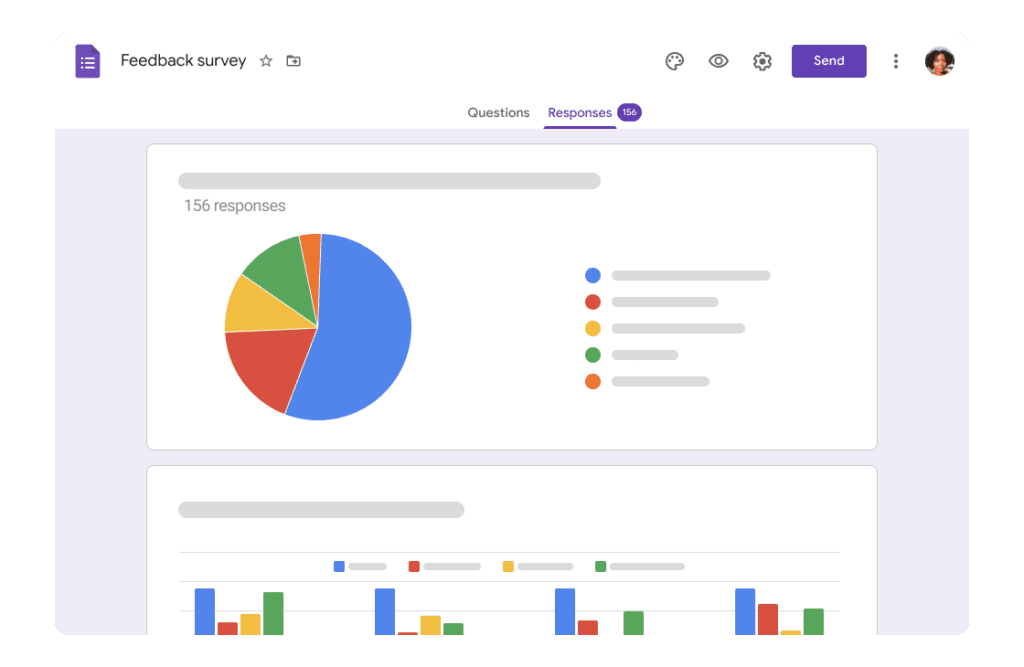
Strengths:
These platforms offer straightforward design features and scalable pricing making them an excellent choice for small startups who need a reliable, easy-to-use platform.
Challenges:
These platforms can have limited features and basic reporting, leaving them less ideal for companies who are looking to drive significant change in employee engagement.
Enterprise Platforms:
Culture Amp:
Culture Amp offers a wide range of features, including pulse surveys, 360-degree feedback, OKRs, and goal setting. It boasts robust data analytics and reporting capabilities. Culture Amp also uses the Employee Net Promoter Score (eNPS) to gauge employee loyalty and satisfaction.
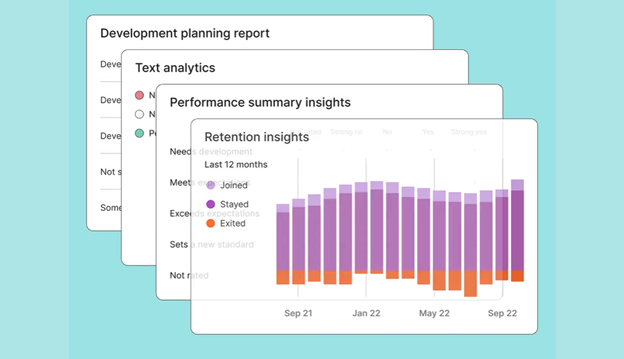
Qualtrics:
Qualtrics is another powerful employee feedback platform with features like surveys, pulse surveys, and engagement measurement. It provides advanced text analytics to identify themes in open-ended responses.
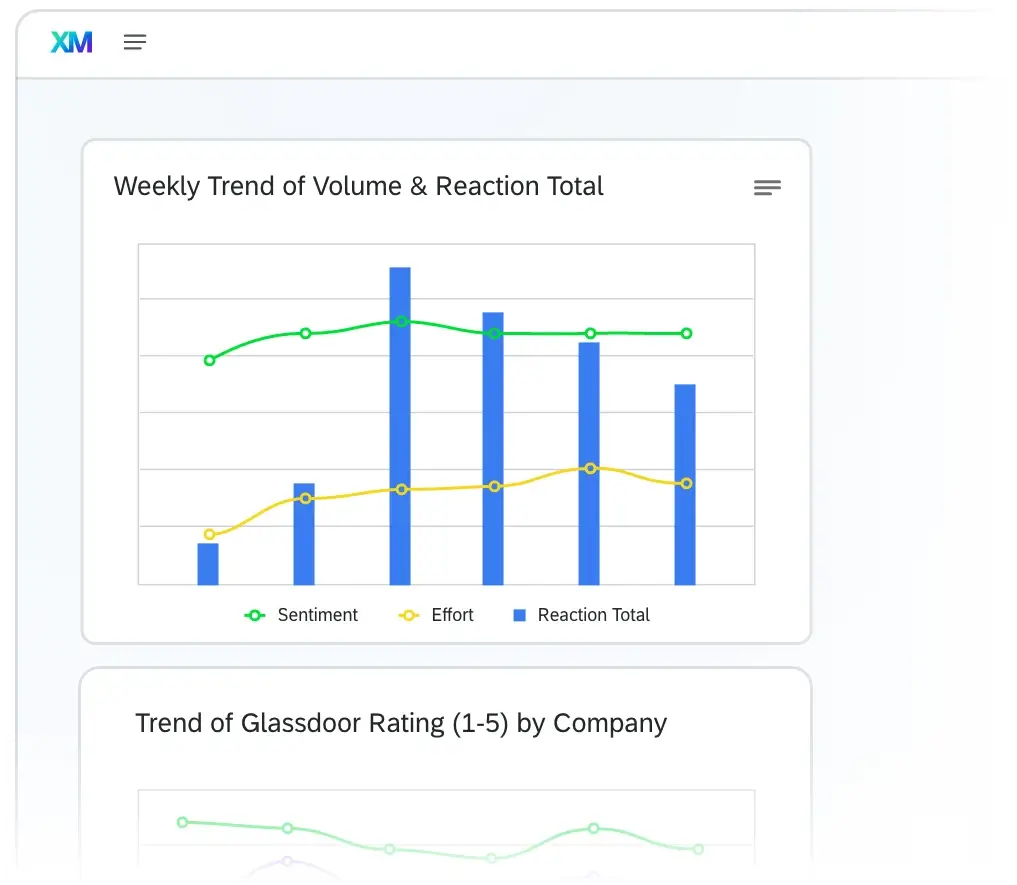
Strengths:
Powerful data analysis and reporting, comprehensive features.
Challenges:
While these types of solutions are adept at a wide range of capabilities, they oftentimes also bring a large price tag and a steep learning curve. Without the right time and training, these tools can be more costly than they are beneficial.
Drive Better Engagement with Terryberry
Terryberry provides solutions to help drive performance and retention through effective employee engagement. These solutions include:
- Service Awards and Performance Awards: Recognize and reward employees based on years of service awards, anniversaries, or performance.
- Social Recognition: Empower your employees and managers to recognize their peers and celebrate successes with an easy-to-use social recognition application.
- Feedback and Communication: Unlock improved feedback and communications with employee and customer feedback solutions.
- Wellness Programs: We make it easy to run wellness programs and activity challenges that increase engagement, expand corporate health, and build team camaraderie.
Ready to learn more? Schedule a demo with our team to get a hands-on walkthrough of how Terryberry can transform the culture of our workplace.

